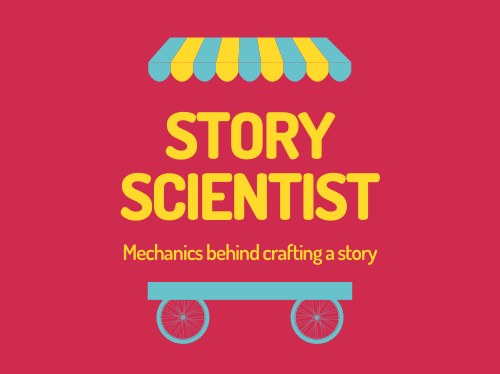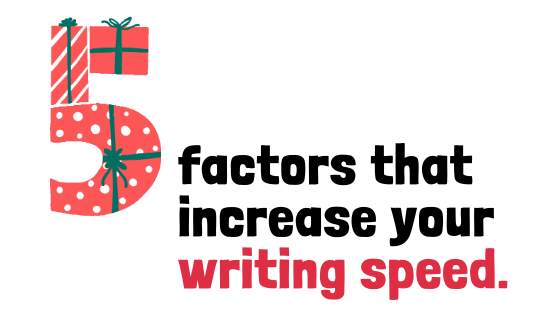Typing speed. Was that your answer? Well, it is obvious. But that’s not it.
There is more to the iceberg.
First, let’s answer a different question. “How long does it take to write an article?”

How long does it take to write an article?
It depends. Many factors come to play in determining the time you spend on creating an article for your blog publication.
I am going to share 5 factors that matter the most in determining how long it takes to write an article. But, here is the thing. You need to acknowledge ‘who you are’ and rephrase the question while allocating time to write an article.
Are you a professional writer, an entrepreneur, a product manager, a marketing head, or someone else? ‘Who you are’ also determines how long it takes. And this is because…
Every person comes with some advantages. It could either be prior industry knowledge, storytelling skill, better vocabulary, or the sheer skill of writing.
So let me get to how long it takes to write an article.

Why is it so important to determine the time that you choose to spend on an article?
You need to design a task to ensure that it is designed for success. Many people drop off from the habit of writing, early. This is because they fail to find time to block on their calendar, failing to build the habit of writing.
Once you know how long it takes to complete an article with your ability, then you would create a more practical and success-driven plan. It is like an engine. The writing habit is fuel.
It creates a cascading effect. This makes it very important to set things right at the beginning. So, determine how much time you intend to spend periodically in writing an article.
Word of Wisdom: Don’t try in the beginning to create a high-quality article in a day. It is fine to break sections of a single article to be completed in a week or even a month. It is fine to go slow. You will catch up with the speed soon, with consistency.
#1 Factor: Length of the Article

Shorter and crisp messages need deep focus and clarity of intent. Seth Godin writes one 100-word article on his blog, every day. Similarly, a 50-word article as a Linkedin post is written with a laser-sharp objective.
How to increase the speed of writing short articles?
Your pace to complete such short articles increases with a better structure. In words of storytelling, we call this structure, a ‘plot’.
Your structure or plot gets better with a rhythm. And, this gets better when you know your audience well. You know what they are looking for from you. It helps you build the thrill, expectation, suspense, and climax.
Long articles
Longer articles are meant for guided learning. They are used by people to ensure they make more informed decisions. It could be a simple ‘how-to’ article or it could be an introduction to a new idea or technology. These need deep research about the subject rather than your audience. If you had to weigh subject matter expertise and audience research for long articles, subject knowledge would gain more weight.
The longer articles need source validation, argument validation, research quotes, true data, process information, and such other knowledge-rich anchors.
How to increase speed writing long articles?
The more informed, knowledgeable, and strong you are at the subject, the faster you can deliver an article.
This is where entrepreneurs and research scientists win the game. This is why if you are hiring a writer to write long articles, ensure that they have enough subject matter expertise to match the speed of light.
#2 Factor: Familiarity with the article

Familiarity is determined by two functions knowledge and analytics. This is true even with fiction. If it is your first piece, you will have no analytics. You will have to use prior experience and gut feeling.
Familiarity does not equate to mere subject matter expertise. For a blog writer, familiarity is also about knowing who you are writing for (your audience), how do they prefer consuming it (the structure and format), how much you know about this niche topic that you have chosen (niche subject with context), where will this article be published (channel), and what has worked in the past (the killer formula or secret sauce derived from analytics).
So here’s the checklist for a content editor or entrepreneur that needs to be handed over to a content writer. This enhances the familiarity of the writer which also increases the production time.
- Audience
- Structure and Format
- Niche subject with Context
- Channel
- Secret Formula
#3 Factor: Relationship with your Audience

The more you know about your audience, the better would be the quality of the article. You would have deep insights into what type of vocabulary is better appreciated by your audience.
For instance, if you are addressing the importance of an API (Application Programming Interface), then you need to talk differently to developers vs marketers.
A developer would appreciate vocabulary such as software, calls, request, protocols, and so on while defining an API.
Vs
A marketer would appreciate vocabulary such tools/solutions, outcome and functions of the API, user interface, and so on.
This flair of attracting an audience comes with knowing them deep enough. In fact, identifying your audience is the first step of any writing practice. This comes even before selecting a topic.
#4 Factor: Intended Channel for Publishing the Article

Website vs a third-party digital publication. Or is your channel Medium or Substack? The article you write is driven by where you intend to publish it.
Articles written for your website would be conversion-oriented. Third-party digital content is best for aiding domain authority, building brand identity, and linking back to your main property – most often the website.
Even among multiple third-party websites, the publication would have their own tribe to attract. For instance, Entrepreneur.com vs Reddit vs TechWorld. Very different packaging.
The audience on Medium could have been accustomed to certain a style of content coming from you and for those on Substack, it could be different.
#5 Factor: Lifespace of your Article

Long-form articles are made to last for a long time. These articles are used to build its own page authority, increase internal linking, create an ongoing engine of leads, keep it sticky as a lead magnet, and so on.
The research and structure creation for these types of articles are more time-consuming.
Social media excerpts to promote an article are short-lived. They go hidden after a while. So how much time you invest in perfecting them is a matter of what objective you want to achieve.
Also, articles that are used to advertise event announcements, milestone achievements, PR releases remain short-lived. So, the time invested in these formats should be constrained to 30 mins.
What are the 5 factors that increase your writing speed?
- Length of the article
- The familiarity of the article
- Your relationship with the audience
- Channel used to publish the article
- The targeted lifespan of the article
For more content hacks, follow the episodes every Tuesday on Linkedin.
If you choose to learn more about Story Sciences, explore here.

